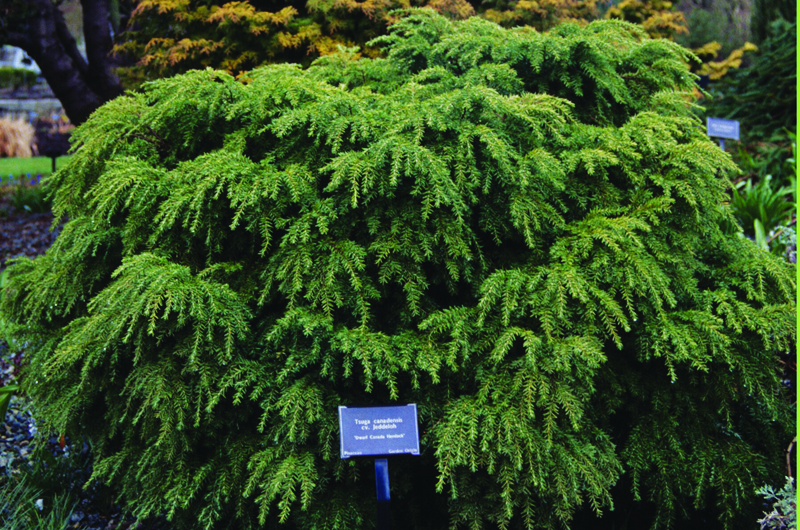| General Description | Tsuga canadensis 'Jeddeloh' is a mounded dwarf conifer with a flat top and central depression giving it a bird’s nest appearance. |
| Shape | Rounded with a flat top and central depression. |
| Landscape | Suitable for smaller rock gardens, planting in groups, foundation plantings, patios and dwarf conifer collections. |
| Propagation | By semi-hardwood cuttings taken in late summer or early autumn. Select vigorous shoots and cut stems 4 - 5 cm in length, dip cut ends in rooting hormone (this is necessary for rooting), plant in moist potting media and keep in a closed case out of direct sunlight. Once rooted, harden off and repot. |
| Cultivation | Grow in partial to full shade, in cool, moist, well-drained, humusy, acidic soil. Intolerant of cold, drying winds and drought, salt and pollution. Can be pruned in spring to summer but is not necessary. |
| Pests | A healthy plant is usually pest and disease free. There is a possibility of infestation with Hemlock Woolly Adelgid. Butt-rot fungus, needle-blight, canker, rust, and rot are also occasional problems. |
| Notable Specimens | Missouri Botanical Garden, St. Louis, Missouri, the United States of America.
Whistling Gardens, Wilsonville, Ontario, Canada. |
| Habitat | Horticultural origin. |
| Bark/Stem Description | Red-brown and flaky when young, maturing to dark or grey brown and ridged. |
| Flower/Leaf Bud Description | Green, egg shaped. |
| Leaf Description | Spring needles are lime green, in summer they are bright green and in autumn, dark green, all with 2 white bands on the underside, spirally arranged along stems. |
| Flower Description | Non-flowering. |

